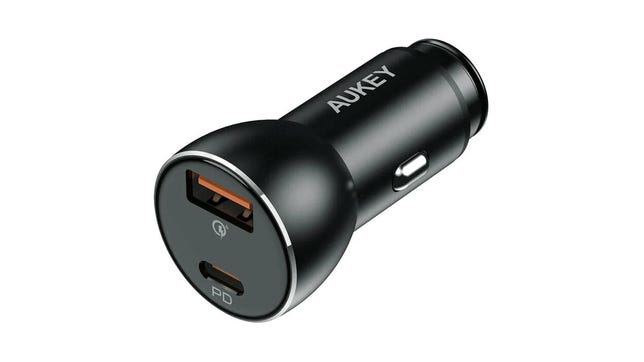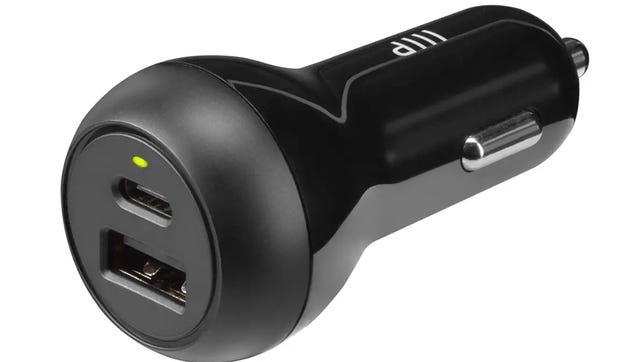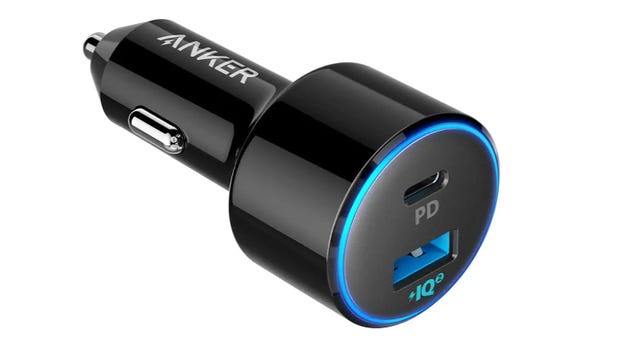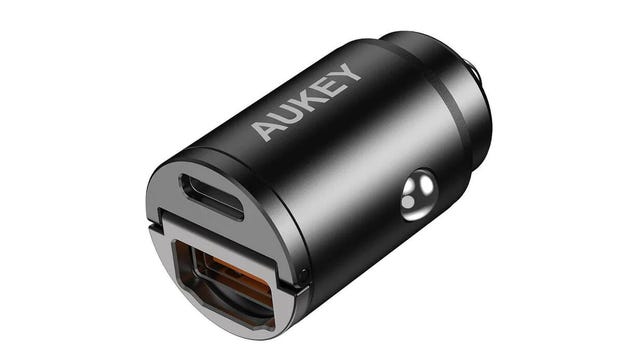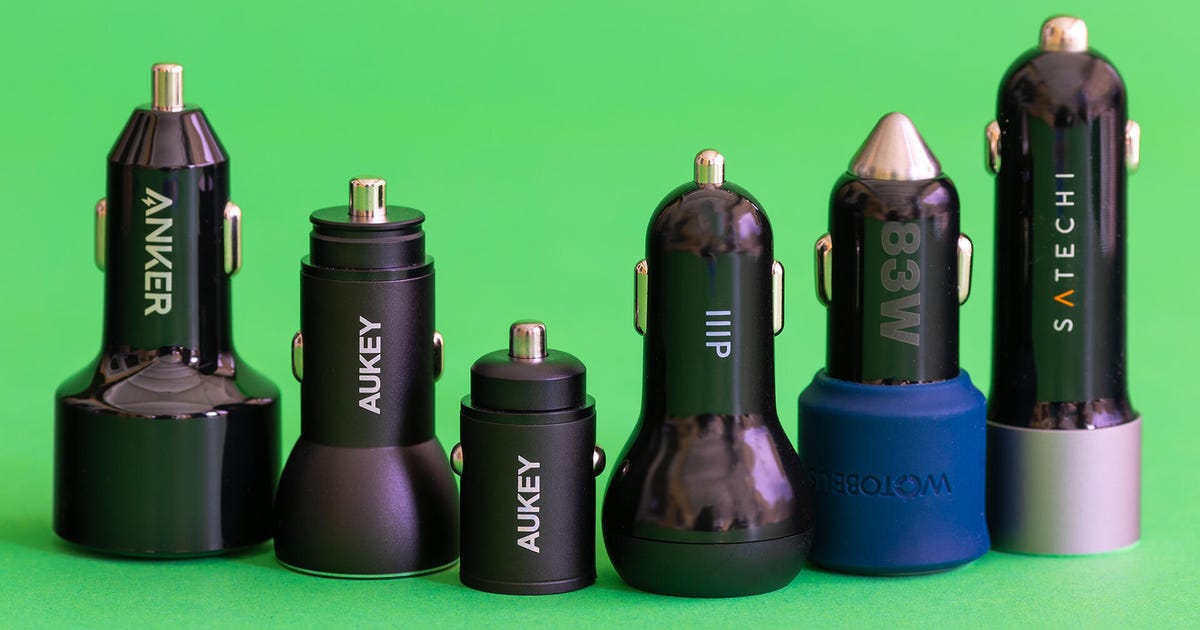
Riding in the car can drain a lot of your phone battery. Especially if you’re playing music, chatting on the phone or using navigation to get to your destination — and navigation has become pretty much vital for any commute or road trip. The problem is, unless your car has a built-in screen that’s able to run CarPlay or Android Auto, you’re running your phone screen nonstop and probably at high brightness. Even if your car has a USB port to charge it, it might not be enough for today’s big-screen smartphones without running down the phone’s battery.
Fortunately, car charger tech has improved just like home charger tech. You can now get some high wattage options, at least for the category, that can either maintain the charge on your phone and/or charge up another device rapidly. And that’s the key: You definitely want to invest in a dual-port charger that you can plug into your vehicle’s 12-volt adapter (or “cigarette lighter,” if you’re from the old school).
There are a variety of options when it comes to multiport car chargers. Historically these were two or more USB-A ports, the wide rectangular connection we’ve had on nearly everything for decades. More recently, there have been a growing number of USB-C options. USB-C, the small, rounded-off rectangle, is found on nearly all cell phones (other than Apple), tablets, laptops and more. It’s basically the new standard in everything but name. We decided to focus on chargers that have one of each, as this gives you the flexibility to charge newer USB-C devices, plus a “legacy” USB-A port that can connect to any USB devices as long as you have the right cable. (You can always pick up dongles or adapters to go from USB-C to USB-A or USB-A to USB-C, too.)
In our testing, there wasn’t a huge difference in charging times between the models we tested, though some were faster than others.
Aukey
The Aukey CC-Y48 48W Dual Charger was just a few seconds behind the Satechi in charging speeds. However, it’s a lot cheaper and not as tall. It also supports both the QC and PD charging protocols, so it should fast-charge a wider variety of phones and other devices. It offers a lot of benefits for being just fractionally slower in our testing, plus it’s one of the cheapest car chargers we tested. An all-around easy choice.
Satechi
While all the chargers we tested charged with fairly similar rapidity, the Satechi charged two devices at the same time the fastest… by a few seconds. But a few seconds is a few seconds. It has a fairly typical torpedo shape, but is taller than the others we tested. That may be a strength or weakness, depending on your car’s layout. It’s on the expensive side of the chargers we tested, but wasn’t the most expensive either.
The Satechi doesn’t support the QC fast charging protocol, so if your phone only supports that, check out the Aukey instead. Overall, this is a good charger if you don’t mind the height, and a great charger if that height fits your car better.
Monoprice
Monoprice has developed a reputation for decent products at low prices, and this charger is a pretty good example of that. Speed-wise it was mid-pack, a few minutes slower than the best, a few minutes faster than the worst. However, at $13 at the time this is published, it’s one of the cheapest options here, less than half of the Satechi and in between the price of the two Aukey models at the time of testing.
The Monoprice only supports the PD fast charging protocol.
Amazon/Screenshot by CNET
This Anker performed in the middle of the pack in our testing, which in fairness meant just a few minutes behind the leaders. However, its price at the time was the highest of any we tested. It is also the largest, with the output end roughly twice as wide as the barrel. Not a bad charger by any stretch, and if it was cheaper than our winners here, it’d be a great alternate.
Unlike many of the other options we tested, this one is still available on Amazon, too. This similar Anker model is a bit more affordable.
Aukey
The Aukey CC-A3 is absolutely tiny. In most cars it will likely remain flush with the top of the 12-volt socket itself. To remove it, there’s a small handle that pivots up when needed, and folds down flush with the top when not in use. It’s a clever design. It’s also the second-slowest charger we tested. That equates to about 10% longer to 50% capacity. However, the small size likely makes up for that speed difference.
The CC-A3 supports both the QC and PD fast charging protocols.
Other products we tested
Wotobeus PD 65W: The Wotobeus offered a splash of color in the form of a removable silicone sleeve that covered the larger half of the charger. Despite having the highest claimed wattage rating (83!), it actually charged the slowest in our testing. This, combined with a price the same as some faster chargers, put it out of the running.
How we test car chargers
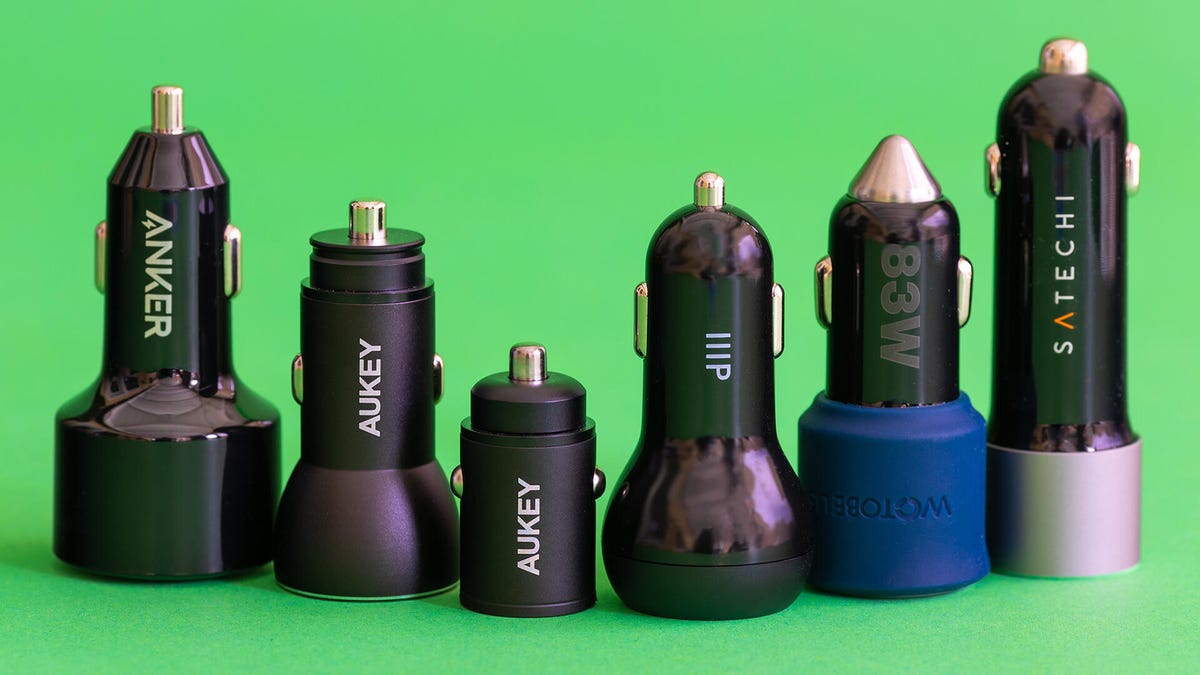
Geoff Morrison/CNET
We performed both synthetic and real-world testing for all the chargers we considered. Using a MakerHawk Electronic Load Tester, an Uctronics Electronic USB Load Tester and a JacobsParts USB C PD DC Voltage Trigger Test Module I tested the maximum amperage possible for each of the USB-specified voltage outputs each device was capable of . I didn’t waste gas to do this, instead I used a Knoter AC to DC Converter which is rated at far more wattage than we were dealing with here. While interesting, and a good test to get a sense of what’s going on “behind the scenes,” these numbers didn’t create terribly useful real-world numbers for most people.
So I used the Uctronics Electronic USB Load Tester to create a “dummy load” at the maximum power output possible on the charger’s USB-A output, and then timed how long it would take to charge a fast-charging USB-C device, in this case a Pixel 5. Most battery-powered devices limit the charging speed at the upper and lower ends of the battery’s maximum storage, so I timed how long it would take to charge 10% with the battery no lower than 30% and no higher than 70%. Overly cautious? Probably. I also put the phone in airplane mode and waited for the screen to go into standby before timing.
The chart below shows that number, plus a calculated “for 50%” time that estimates how long it would take to charge 50% of this device’s battery. Charging speeds between phones/tablets/etc. can vary for a number of reasons. Which is to say your phone, with the same charger, might charge faster or slower than the numbers listed here. However, it should charge roughly the same amount faster or slower compared to one of the faster or slower chargers.
Charge times
| Brand | Model | Time for 10% with full load on USB-A | Approx. time for 50% |
|---|---|---|---|
| Satechi | 72W Type-C PD Car Charger Adapter | 6 min 43 sec | 33 min 35 sec |
| Aukey | Dual 48 | 6 min 47 sec | 33 min 55 sec |
| Anker | PowerDrive Speed Plus 2 | 7 min 01 sec | 35 min 05 sec |
| Monoprice | Two-Port 39W | 7 min 07 sec | 35 min 35 sec |
| Aukey | CC-A3 | 7 min 14 sec | 36 min 10 sec |
| Wotobeus | PD 65W PPS | 7 min 25 sec | 37 min 05 sec |
Car charger FAQs
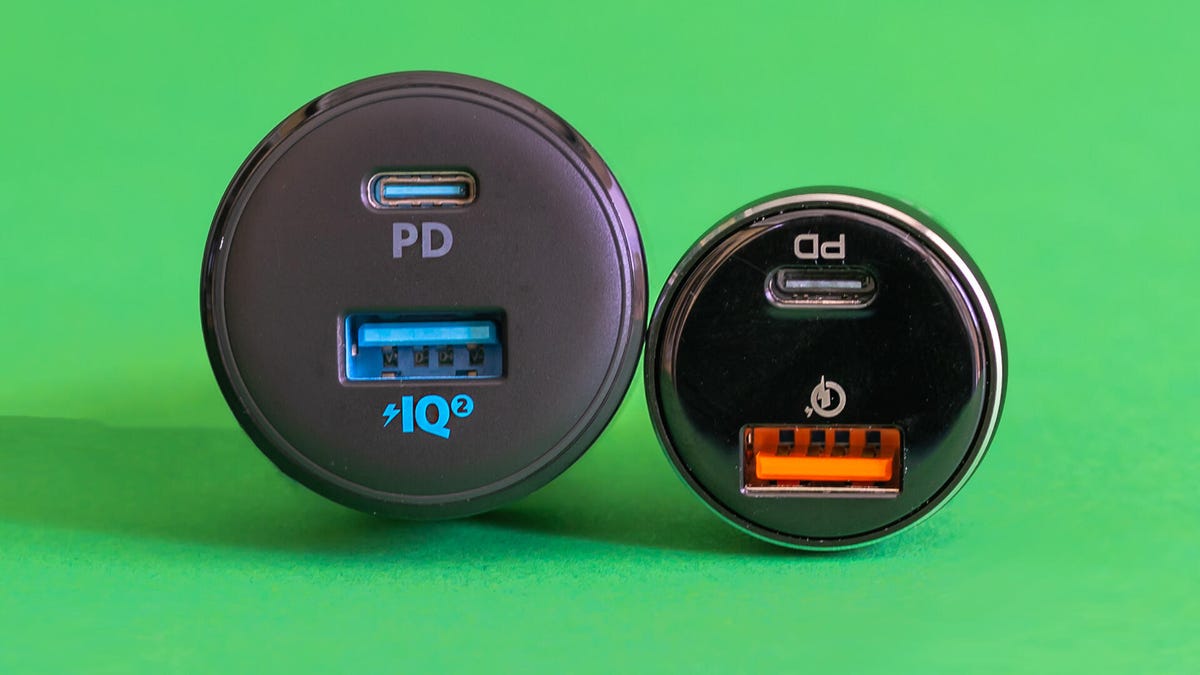
The large Anker PowerDrive Speed Plus on the left, the winning Aukey Dual (USB-C/USB-A) Car Charger on the right.
Geoff Morrison/CNET
How fast can car chargers really charge?
This is an interesting question. Theoretically, the maximum output from a 12-volt “cigarette lighter” socket is 180 watts, since most run through a 15-amp fuse (15Ax12V=180W). In practice, it’s far lower. The last thing any manufacturer wants is for you to blow fuses in your car trying to recharge three phones, a laptop and a curling iron or something. For the most part, the fastest car chargers will charge your phone in a similar, though probably somewhat slower, timeframe as a decent charger at home.
Are the manufacturers’ wattage ratings real?
No.
That said, if you consider that the number is split between the different USB outputs… also, no.
The wattage output ratings for each charger is a theoretical maximum based on what could be supplied by the specific outputs. It’s always all the outputs combined into a single number; you’ll never get close to that on a single USB connection.
That all considered, they should give you an idea, within a brand, which charger offers the highest potential output. One company’s 48-watt charger should charge devices faster than that same company’s 12-watt charger. But there’s no way to know if one company’s 48-watt charger is faster or slower than another company’s 30-watt or 80-watt, as you can see in our testing.
Can my phone fast-charge on any charger?
Maybe. There are several fast-charging specifications and most phones don’t include them all. Most chargers don’t include them all either. Before purchasing any charger, even our picks, it’s worth finding out what kind of charging your phone is capable of and making sure the charger supports it. The two protocols to consider are PD and QC. PD is extremely common, QC is found in many, though not all, phones/tablets that use Qualcomm chips.
Will an 80-watt charger blow up my 18-watt phone?
Not unless there’s something really, really wrong with your charger and your phone. The beauty of USB is that the changing device only draws as much power as it needs from the charger.
What about dual USB-C chargers?
There are endless varieties of car charger outlet combinations. For any reasonable-length guide such as this, a narrowing down is necessary. That’s why we focused on chargers with one USB-C and one USB-A port, for the greatest flexibility. However, if you don’t need a USB-A port, most of the companies we’ve mentioned above also make dual USB-C chargers that likely perform similarly. Click on one of the options above that looks good to you, and there’s likely a dual USB-C option listed as a recommendation elsewhere on that page.
What about 4x USB-C and larger?
Most likely a good charger with four USB-C inputs will charge a single device just as fast as our picks, possibly even two devices. However, there’s only so much power that can go through one of these devices. Four USB-C devices all charging at the same time aren’t going to charge as fast as a single device on the same charger.
They’re also huge. Maybe I’m overly sensitive to this since I drive one of the smallest cars you can buy, and the last thing I want is a USB charger the size of my passenger seat taking up space. If you regularly charge that many devices, and you have the space to spare, they’re worth considering. Some of the companies we looked at also make big multichargers, but not all.
Do I need special cables?
Maybe. Apple products are persnickety about their cables, so you might need a MFi-Certified Type-C-to-Lightning cable to enable fast charging. Non-Apple devices should be fine with any decent USB-C cable.
I did find a difference in charging times with longer USB-C cables, so for the best times it’s good to keep the length of the cable as short as possible.

